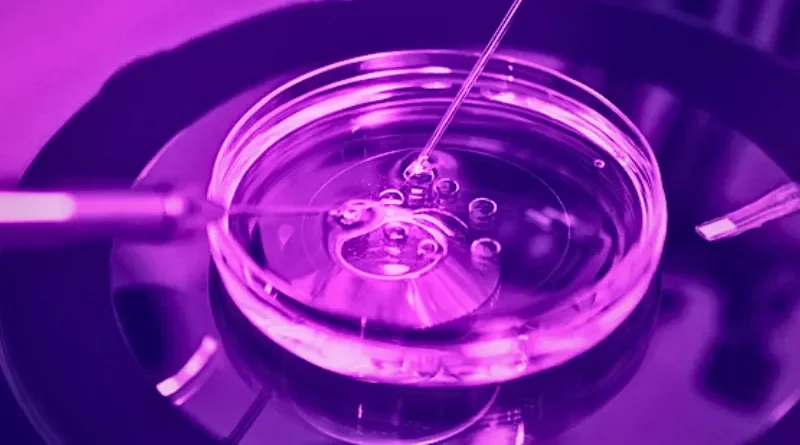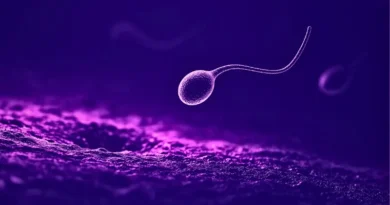IVF Treatment Process and Success Factors
IVF treatment process or commonly known as In Vitro Fertilization (IVF) has revolutionized fertility treatment, offering hope to millions of couples struggling with infertility. This assisted reproductive technology (ART) helps individuals conceive when natural conception isn’t possible due to medical or genetic reasons. With advancing medical science, IVF treatment process has become more accessible and successful, but its outcome depends on various factors, including age, underlying health conditions, and lifestyle choices. In this article, we’ll explore what IVF is, when it’s recommended, the step-by-step process, different techniques, success rates, risks, and ways to improve IVF outcomes.
What is IVF?
IVF (In Vitro Fertilization) is an assisted reproductive technology (ART) where an egg is fertilized with sperm outside the body, in a laboratory. The fertilized embryo is then implanted into the uterus for pregnancy.
This procedure is widely used for treating infertility, genetic conditions, and certain reproductive disorders. IVF offers a controlled environment for fertilization, increasing the chances of successful conception when natural pregnancy is difficult.
(Source: Mayo Clinic)
When is IVF Done?
IVF treatment process is recommended for individuals and couples facing fertility challenges that make natural conception difficult. Below are the most common medical conditions and circumstances in which doctors may suggest IVF:
1. Blocked or Damaged Fallopian Tubes
The fallopian tubes are essential for natural fertilization, as they transport the egg from the ovary to the uterus. If these tubes are blocked or damaged, sperm cannot meet the egg, preventing conception.
Causes of Blocked Fallopian Tubes:
✅ Pelvic Inflammatory Disease (PID): Infections like chlamydia or gonorrhea can cause scarring.
✅ Endometriosis: The abnormal growth of uterine tissue outside the uterus can lead to fallopian tube obstruction.
✅ Previous Pelvic Surgery: Surgeries related to ectopic pregnancy or ovarian cyst removal may cause scarring that affects the tubes.
Since fallopian tube damage is often irreversible, IVF allows fertilization to take place outside the body, bypassing the blocked tubes entirely.
(Source: American Society for Reproductive Medicine)
2. Male Infertility (Low Sperm Count or Poor Sperm Motility)
In some cases, infertility is due to male factor issues, such as low sperm count, poor motility (movement), or abnormal sperm shape (morphology). These conditions make it difficult for sperm to fertilize an egg naturally.
Causes of Male Infertility:
✅ Varicocele: Enlarged veins in the testicles that cause overheating, affecting sperm production.
✅ Hormonal Imbalances: Low testosterone levels can reduce sperm production.
✅ Lifestyle Factors: Smoking, excessive alcohol, and obesity negatively affect sperm health.
For men with severe sperm abnormalities, Intracytoplasmic Sperm Injection (ICSI) is used during IVF, where a single healthy sperm is directly injected into an egg to increase fertilization chances.
(Source: Mayo Clinic)
3. Ovulation Disorders
Ovulation disorders prevent or delay the release of mature eggs, making natural conception challenging.
Common Ovulation Disorders Requiring IVF:
✅ Polycystic Ovary Syndrome (PCOS): A hormonal disorder that disrupts ovulation, causing irregular or absent periods.
✅ Hypothalamic Dysfunction: Irregular hormone signals from the brain prevent ovulation.
✅ Premature Ovarian Failure (POF): The ovaries stop functioning before the age of 40, reducing the number of available eggs.
For women with mild ovulation disorders, medications like Clomid or Letrozole may help stimulate egg release. However, in severe cases, IVF is recommended to extract and fertilize eggs outside the body.
(Source: National Institute of Child Health and Human Development)
4. Endometriosis
Endometriosis is a condition where tissue similar to the uterine lining grows outside the uterus, affecting the ovaries, fallopian tubes, and pelvic cavity. This condition can:
❌ Cause inflammation and scarring, blocking the fallopian tubes.
❌ Interfere with ovulation, reducing the chances of natural conception.
❌ Lower egg quality, making fertilization difficult.
For women with moderate to severe endometriosis, IVF treatment process is often the best option because it bypasses the damaged reproductive structures, increasing the likelihood of a successful pregnancy.
(Source: Endometriosis Foundation of America)
5. Unexplained Infertility
In 10-15% of infertility cases, no clear medical reason can be identified after standard fertility tests. This is called unexplained infertility, where:
❌ Hormone levels appear normal
❌ Egg and sperm health seem fine
❌ The fallopian tubes are open and functional
Since natural conception isn’t happening despite no visible issues, doctors may suggest IVF as an alternative pathway to improve the chances of pregnancy.
(Source: Harvard Medical School)
6. Genetic Disorders
Some couples have an increased risk of passing genetic diseases to their children, such as:
❌ Cystic Fibrosis
❌ Sickle Cell Anemia
❌ Thalassemia
❌ Huntington’s Disease
In such cases, Preimplantation Genetic Testing (PGT) is done during IVF to screen embryos for genetic abnormalities. Only healthy embryos are implanted, reducing the risk of inherited conditions.
(Source: National Human Genome Research Institute)
7. Fertility Preservation (Egg Freezing & Embryo Freezing)
Many women choose egg or embryo freezing to preserve their fertility for future pregnancy.
Why Women Freeze Their Eggs:
✅ Delaying motherhood due to career, education, or personal reasons
✅ Undergoing cancer treatment (chemotherapy/radiation)
✅ Diagnosed with conditions affecting fertility (PCOS, endometriosis, early menopause)
By freezing eggs at a younger age, women can use them later for IVF when they are ready to conceive, increasing the chances of a healthy pregnancy.(Source: Johns Hopkins Medicine)
Step-by-Step IVF Treatment Process
IVF treatment process is a multi-step process that can take several weeks per cycle. Below is a breakdown of each stage:
1. Ovarian Stimulation
- The woman is given hormonal medications (FSH, LH) to stimulate multiple egg production instead of just one per cycle.
- Regular blood tests and ultrasounds monitor follicle growth.
2. Egg Retrieval (Oocyte Aspiration)
- Once the follicles reach the ideal size, a minor surgical procedure retrieves the eggs.
- A thin needle is inserted into the ovaries via ultrasound guidance, and the eggs are extracted.
3. Sperm Collection & Fertilization
- A fresh or frozen sperm sample is prepared.
- Fertilization occurs in two ways:
- Conventional IVF – The sperm and eggs are placed in a petri dish for natural fertilization.
- ICSI (Intracytoplasmic Sperm Injection) – A single healthy sperm is directly injected into the egg.
4. Embryo Culture & Development
- The fertilized egg develops into an embryo under controlled laboratory conditions for 3-5 days.
- Preimplantation Genetic Testing (PGT) may be done to identify chromosomal abnormalities.
5. Embryo Transfer
- A healthy embryo is selected and transferred into the woman’s uterus using a thin catheter.
- A blood test after two weeks confirms pregnancy.
(Source: Society for Assisted Reproductive Technology (SART))
Success Rate of IVF
IVF success rates vary based on factors like age, underlying health conditions, and embryo quality.
- Women under 35: ~50-55% success rate per cycle
- Ages 35-37: ~40-45%
- Ages 38-40: ~30-35%
- Ages 41-42: ~15-20%
- Over 43: <10%
Younger women have higher success rates due to better egg quality. If natural eggs aren’t viable, donor eggs can increase success rates to 50-60% per cycle.
Factors Affecting IVF Success
Several factors influence IVF treatment process success, including:
✅ Age of the Woman – Younger women have healthier eggs.
✅ Egg & Sperm Quality – Poor-quality eggs or sperm reduce fertilization chances.
✅ Uterine Health – Fibroids, polyps, or thin uterine lining can impact implantation.
✅ Lifestyle Factors – Smoking, obesity, and high stress lower success rates.
✅ Embryo Selection – PGT testing improves implantation rates.
Risks & Side Effects of IVF Treatment Process
While IVF is safe, there are some risks:
- Ovarian Hyperstimulation Syndrome (OHSS): Overreaction to fertility drugs causing bloating and discomfort.
- Multiple Pregnancy: IVF increases the chances of twins or triplets.
- Miscarriage & Ectopic Pregnancy: Higher risk in older women.
- Emotional & Financial Stress: IVF can be mentally and financially challenging.
How to Improve IVF Success?
🔹 Maintain a Healthy Diet – Eat foods rich in antioxidants, omega-3s, and folic acid.
🔹 Reduce Stress – Yoga and meditation improve IVF outcomes.
🔹 Optimize Hormonal Balance – Regular checkups ensure proper hormone levels.
🔹 Choose a Reputable IVF Clinic – Clinics with advanced technology and high success rates increase chances of success.
(Source: Johns Hopkins Medicine)
Cost & Accessibility of IVF in India (Brief Overview)
- The cost of one IVF cycle in India ranges between ₹1.5 lakh – ₹3 lakh ($2,000 – $4,000).
- Prices vary based on clinic’s reputation, city, and additional procedures.
(Source: Indian Society for Assisted Reproduction (ISAR))
Conclusion
IVF treatment process has transformed the landscape of fertility treatments, offering hope to couples and individuals struggling with infertility. While the process can be physically, emotionally, and financially demanding, advancements in reproductive technology have significantly improved success rates.
Understanding when IVF is needed, the step-by-step process, different IVF techniques, and the factors affecting success can help individuals make informed decisions. Though IVF does come with risks, proper medical guidance, a healthy lifestyle, and emotional support can enhance the chances of a successful pregnancy. If you’re considering IVF, consult with a trusted fertility specialist to evaluate your specific condition and explore the best approach. With the proper support and medical care, IVF can pave the way for parenthood, even in challenging fertility situations.





Pingback: Guide on Getting Pregnant After 35 (Geriatric Pregnancy)